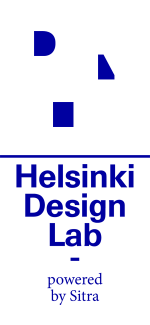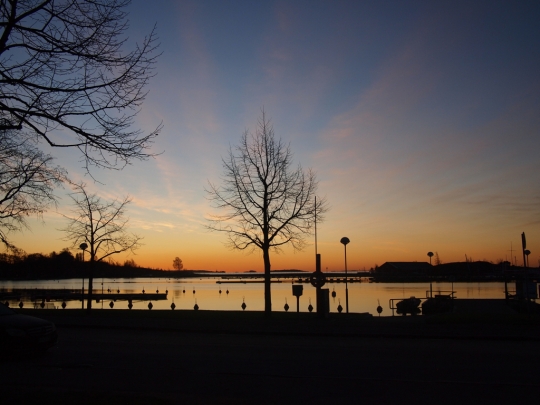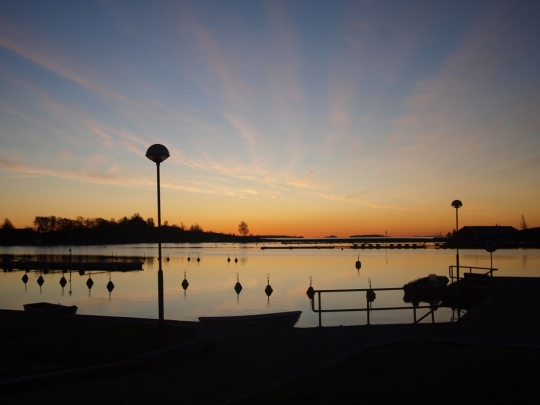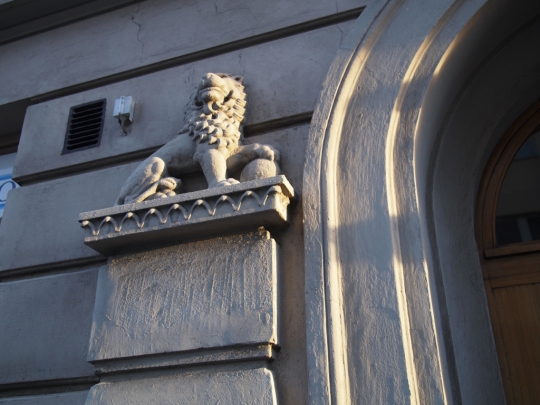This was the view in Helsinki (Eira, specifically) this morning as I dropped my kids off at päiväkoti (daycare). For a relatively new Helsinki resident, the sun appears to be doing some extraordinary things - hanging low in the sky for a few hours, and so bouncing off the Baltic at oblique angles and shrouding only the skyline of the city in a canopy of sunlight that just floats at the top of buildings. November, which roughly translates in Finnish to “dead month” I believe, is traditionally the grottiest month, all rain, cold and darkness before the snow comes to bounce the light around more. But so far it's relatively benign, almost mild. Almost.
Anyway, last week was spent picking up the pieces after the aforementioned Australia trip. I was able to spend a little time with Marco, who was largely knee-deep in stewarding Low2No and Exchange towards the end-of-year finishing line, trying to keep intent intact in both.
Justin and Bryan were in the USA, working on the NYC and Boston book launches for In Studio (both of which have now occurred, and went well by all accounts). Bryan and I managed to catch up about our work reshapng our office space and culture, with Tapio. We’re trying to prototype a new organisation, in line with our new strategy processes with Paula + team, through prototyping new approaches to spaces and systems.
I spent some time on this, and some time on Low2No also, eating up a forthcoming workshop with Arup, Experientia and Granlund, hoping to take the vision down a notch towards strategy; or really, a set of projects which exemplify and unpack the strategy.
Also, much writing. Not least for an upcoming shortish book on strategic design, picking up some of the leads from In Studio; it will include a short diatribe on why I think design thinking is largely a dead-end (before you send me hate-mail, please note the active modifier “largely”.)
I was also lucky enough to receive a visit from Seoul’s Hope Institute, who are perhaps the premier social innovation outfit in South Korea. As usual with these social innovation types (see last week) lots of overlap in terms of intent and approach. Thanks to Sunkyung and Yang So for swinging by on the way home. (Finnair’s strategy of making Helsinki the best European hub for Asia can really work in favour sometimes.)
Nice also to see Patricia McCarney, from the Global City Indicators facility, a colleague from the HDL Sustainability studio team, who was also in town briefly as part of a panel for an architectural competition.
I also had a coffee with the intriguingly anonymous blogger behind Jees Helsinki Jees, one of the best Helsinki0based blogs in terms of unpicking and critiquing the way the city is working. Or not. Sharp, acerbic and informed, it's good to see this kind of contribution to the conversation in a culture which can tend to shy away from uncomfortable topics. Her posts on parking regulations are worth the (free) price of admission alone.
And last but far from least, a really good meeting with the City of Helsinki, of which more later hopefully.
Finally, a new project from one of the world’s most interesting design firms (disclaimer: also good friends) BERG London, which subtly, wittily, playfully, respectfully and just plain smartly connects digital stuff to everyday physical contexts, habits and experiences in a way that has previously been beyond, well, most. Welcome, Little Printer.









I'd be very interested to hear more on why (even largely!) you think design thinking is dead.
Similar to your Design Labs the Design Council in the UK appears to be using design thinking to address it's own systemic issues
http://www.designcouncil.org.uk/our-work/challenges/
posted by Adrian Campbell — 4 weeks ago
I have misquoted you here: I should have written ' a dead-end'.
posted by Adrian Campbell — 4 weeks ago
Well, many of the orginal design thinking boosters have actually claimed it is dead! Bruce Nussbaum for instance (http://www.fastcodesign.com/1663558/design-thinking-is-a-failed-experiment-so-whats-next), but also read Frog's Robert Fabricant piece, which is better I think http://www.fastcodesign.com/1663604/frog-design-3-things-wile-e-coyote-teaches-us-about-creative-intelligence
RE the Design Council projects, the problem isn't with designers thinking but with design thinking. Those projects could be reasonable applications of professional design expertise to complex problems - no change there; that's not design thinking, just design.
Design thinking suggests everyone can start to think like a designer - which is a facile understanding of a) how people 'do design' every day anyway, in some way, and b) that, however, not everyone should be thinking like a designer - they'd often be more valuable thinking like a nurse, or a farmer, or an engineer etc., and c) doesn't genuinely integrate design strategically at the core of organisations, as it is usually consultancy-led, which cannot genuinely change organisations I would argue - only people on the inside of organisations can truly enact change, although sometimes you'd have to absorb new people in to the organisation to enable transformational change.
Organisations can and do thrive by actually embedding design at the core of their strategic and operational functions. It's not an add-on, a buy-in, or consultancy-led proposition. There's a lot more to say, but that can wait!
posted by Dan Hill — 4 weeks ago